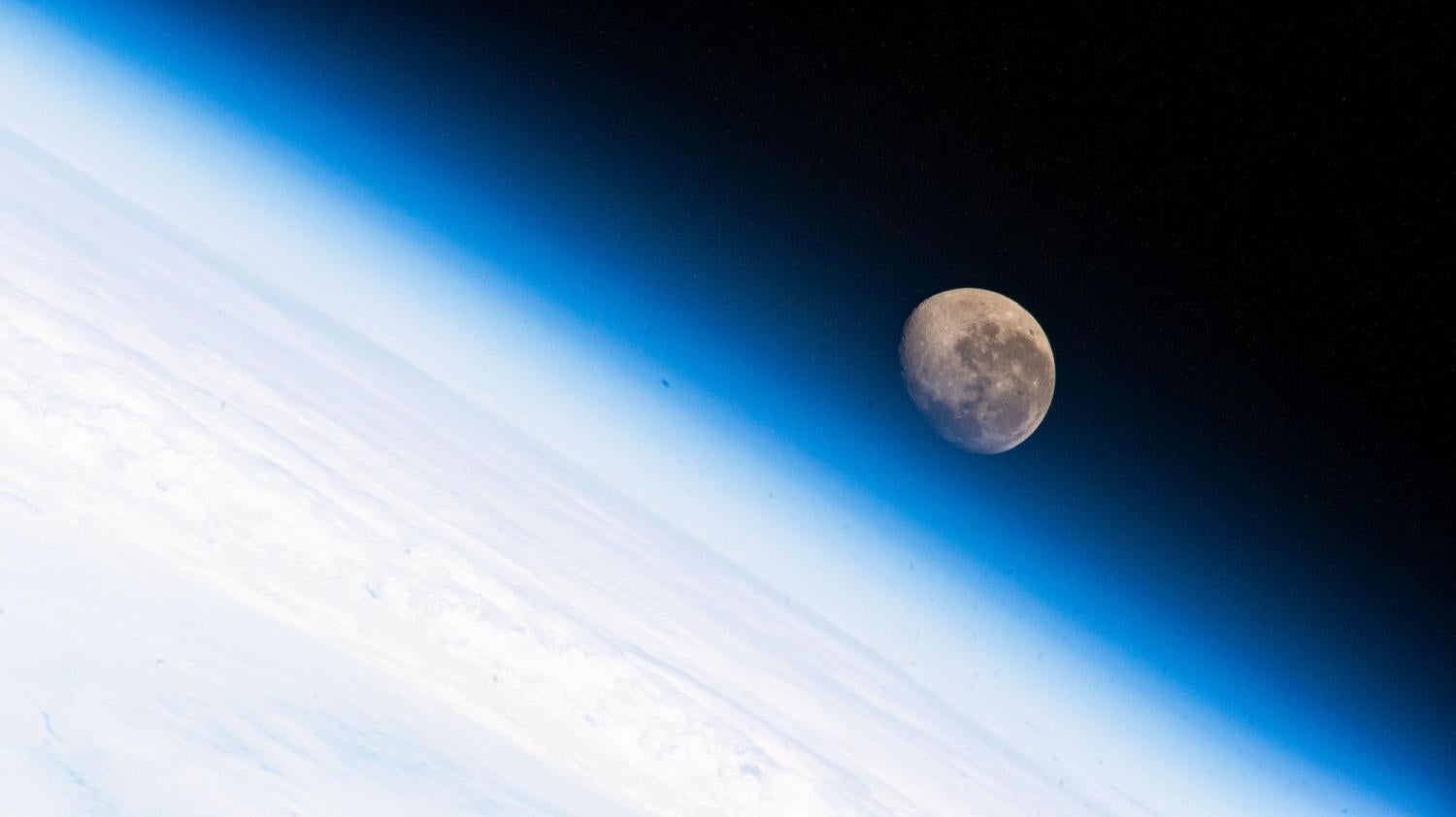CU Boulder lands $5.5 million Air Force project to advance orbital and AI research

The waning gibbous Moon above the Earth's horizon over the Atlantic Ocean.
A team of University of Colorado Boulder researchers is embarking on a major research project that will advance our understanding of orbital mechanics and monitoring, artificial intelligence, and hypersonics.
Led by Marcus Holzinger, an associate professor in the Ann and H.J. Smead Department of Aerospace Engineering Sciences, the group has signed a $5.54 million, five-year cooperative agreement with the Air Force Research Laboratory to advance science and monitoring for next generation of space vehicles – particularly those that will travel beyond low Earth orbit to the Moon.
“These are really complex multi-domain applications in the defense world and we’re bringing together preeminent researchers to tackle these problems,” Holzinger said. “There’s a real opportunity to make important advances.”
The cooperative agreement represents a significant expansion of the relationship between Smead Aerospace and the Air Force Research Laboratory’s Space Vehicles Directorate. Holzinger said the project will include ongoing collaboration and could evolve and change as the research develops.
“The region in, around, and affected by the Earth-Moon-Sun system has drastically increased in commercial activity and Department of Defense mission relevance over the last few years,” Holzinger said. “There are more and more missions going to the Moon – not just our missions but India, China, and Europe as well. That means there needs to be some sensible tracking and detection of what’s going on out there and this project addresses that crucial need directly.”
Holzinger said this area, called space domain awareness, is important for national defense and to ensure spaceflight safety and responsible behavior. Currently, the Air Force maintains tracking networks to actively catalog space vehicles to avoid collisions. However, these systems only work for spacecraft orbiting the Earth, not the Moon, and growing traffic in orbit around Earth has made collision avoidance increasingly complicated.
NASA Orbital Debris Program illustration of satellites and space debris in low Earth orbit.
To address this, the team will work to develop a framework for spacecraft to make autonomous maneuvering decisions without human input by using artificial intelligence both for collision avoidance and to execute complex tasks, said Morteza Lahijanian, an assistant professor in Smead Aerospace and a member of the project team.
“This research will teach us how to go about designing safe autonomy for complex systems, especially in a setting where multiple space vehicles need to cooperate,” said Lahijanian. “This research can lead to designing fully autonomous spacecraft that we can trust, and would eliminate the role of humans who are typically the source of errors in the design or execution of missions.”
The work also aims to better understand the unique orbital dynamics surrounding the Moon to help future researchers and commercial projects, said Holzinger.
“We’re really interested in what sorts of repeating natural orbits are best for various applications and what are the best ways to get to and from those orbits,” Holzinger said. “We want to develop design tools so mission engineers can more easily answer these questions. Right now there are not enough experts that can do that work to meet the need.”
A third goal for the cooperative agreement aims to advance the science of hypersonic vehicles. Hypersonics is an active area of research around the world for national defense purposes.
During hypersonic flight, a vehicle and the gasses surrounding it can reach thousands of degrees, triggering chemical reactions. The team hopes to develop and validate models that will ensure hypersonic vehicle signatures, heat flux, and materials response can be predicted with minimal uncertainty.
In addition to Holzinger and Lahijanian, additional CU Boulder faculty partners include professors Natasha Bosanac, Tim Minton, Hanspeter Schaub, and Dan Scheeres.

